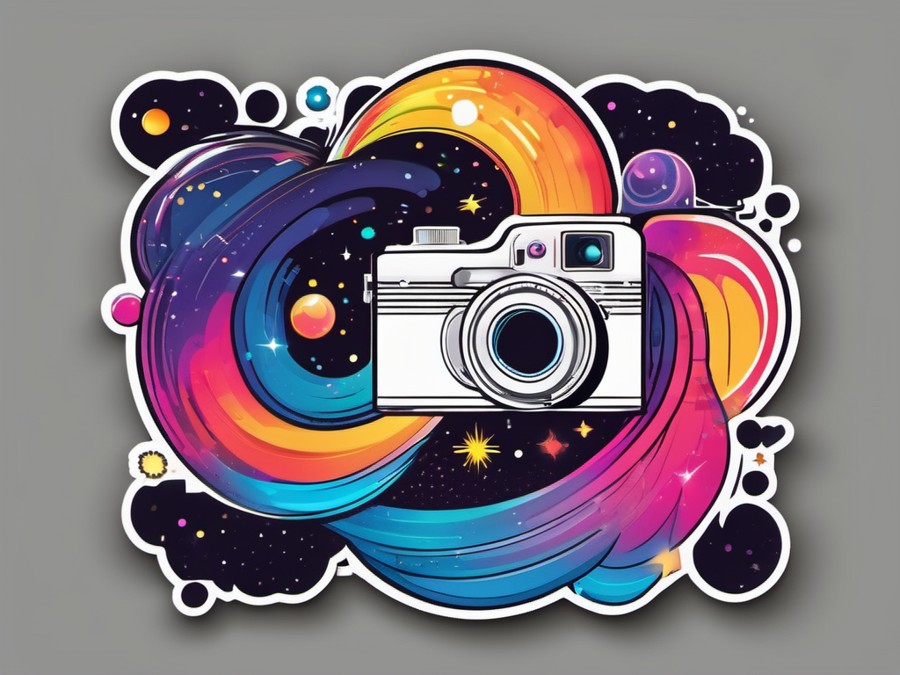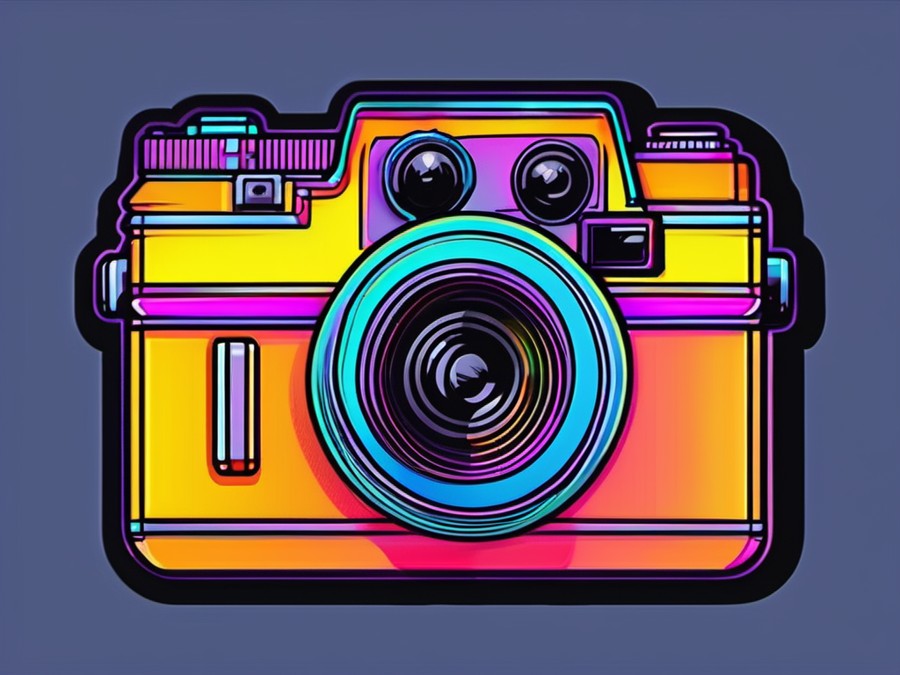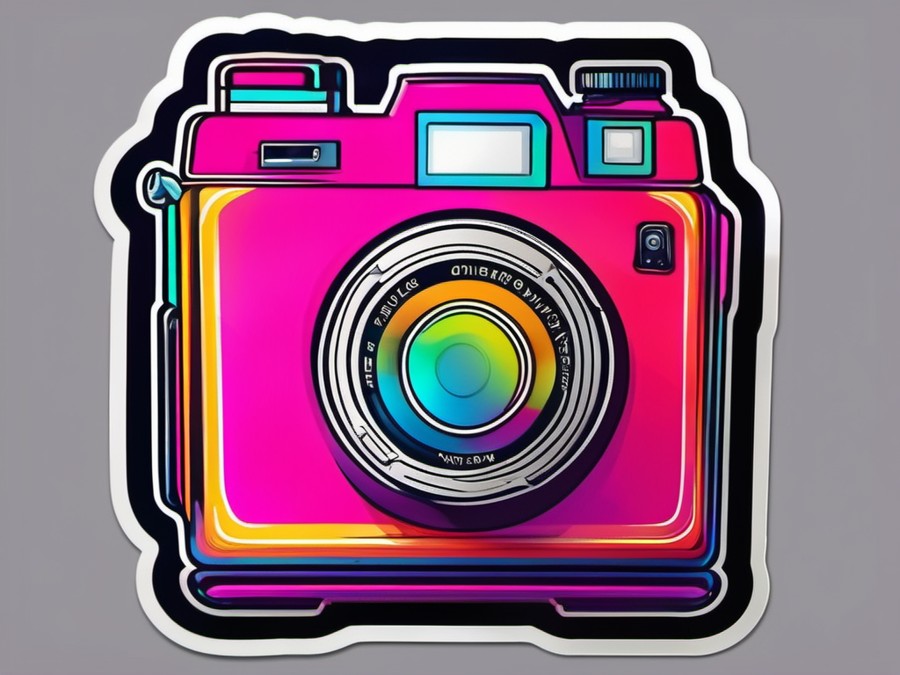· Charlotte Will · Film Cameras · 11 min read
What is a Medium Format Film Camera and Why Use It?
Discover the world of medium format film cameras, their history, advantages, and how to choose the best one for your photography needs. Learn why professionals and enthusiasts alike prefer these cameras for superior image quality, depth of field control, and versatility in various genres like landscape and portrait photography.

# Introduction
Welcome to the world of medium format film cameras, where artistry and precision meet. If you’re new to the realm of film photography or considering a leap from digital, this guide will help you understand what makes medium format cameras so special and why you might want to invest in one.
# What is a Medium Format Film Camera?
1.1 Definition and Basic Explanation
A medium format film camera uses a type of film that is larger than 35mm but smaller than large format sheets. The most common sizes are 6x4.5, 6x6, and 6x7 cm (approximately 2¼ x 3â , 2¼ x 2¼, and 2¼ x 2¾ inches). This larger size translates to more detail and sharper images, making medium format cameras a favorite among professional photographers.
1.2 Brief History of Medium Format Cameras
Medium format cameras came into prominence in the early 20th century with box and folding cameras. The Hasselblad 500C, released in the late 1940s, became a game-changer due to its modular design and interchangeable lenses. Today, both classic models like the Mamiya RB67 and modern digital offerings from Fujifilm and Hasselblad continue to captivate enthusiasts.
1.3 Comparison with Other Camera Formats
- Large Format: These cameras use individual sheets of film, providing the highest quality but limited to a few shots per sheet.
- 35mm: Smaller and more compact, ideal for street photography and everyday use.
- Medium Format: Strikes a balance between quality and versatility, offering more detail than 35mm but with the convenience of roll film.
# The Evolution of Medium Format Cameras
2.1 Early Beginnings: Box and Folding Cameras
Early medium format cameras were simple box or folding cameras, popular for their portability and ease of use. These cameras laid the foundation for the development of more sophisticated models that followed.
2.2 The Rise of the TLR (Twin Lens Reflex)
The Twin Lens Reflex (TLR) cameras, such as the Rolleiflex, gained popularity for their ability to preview images without a darkroom. This innovation allowed photographers to make immediate adjustments, enhancing the creative process.
2.3 The Birth of the Single Lens Reflex (SLR) in Medium Format
The introduction of SLRs in medium format brought interchangeable lenses, enhanced viewfinders, and improved focusing mechanisms. Cameras like the Hasselblad 500C exemplified this shift, becoming a staple in professional photography.
2.4 Digital Medium Format Cameras: A Revolution
The digital era saw the development of cameras like the Fujifilm GFX and Hasselblad X1D, combining the best of analog quality with digital convenience. This revolution has kept medium format cameras relevant in today’s photography landscape.
# Why Use a Medium Format Camera?
3.1 Image Quality: Unparalleled Details and Texture
Medium format cameras excel in capturing intricate details and textures, making them ideal for landscape, portrait, and studio photography. The larger film size allows for more information to be recorded, resulting in sharper images with less noise.
3.2 Depth of Field: Mastering the Art of Focus
The depth of field in medium format cameras can be incredibly shallow, allowing for dramatic isolation of subjects. This feature is particularly advantageous in portrait photography, where you can blur the background to draw attention to the subject.
3.3 Film Grain: Embracing the Analog Aesthetic
Film grain, a feature appreciated by many photographers, adds a unique texture to images. Medium format cameras, with their larger negative size, produce a more subtle and pleasing grain structure compared to 35mm film.
# Advantages of Medium Format Cameras
4.1 Superior Image Quality
The primary advantage of medium format cameras is their unparalleled image quality. The larger negative size captures more detail, providing sharper and cleaner images with greater dynamic range.
4.2 Versatility in Shooting Styles
Medium format cameras are versatile and suitable for various genres, from landscape to portrait photography. Interchangeable lenses and accessories allow photographers to adapt the camera to different shooting conditions.
4.3 Better Handling and Ergonomics
Many medium format cameras are designed with professional use in mind, offering excellent ergonomics and robust build quality. This makes them comfortable to handle and durable for long-term use.
# Medium Format vs 35mm Film
5.1 Image Quality Comparison
While 35mm film offers portability and affordability, medium format cameras produce images with more detail and dynamic range. The larger negative size allows for greater enlargement without losing quality.
5.2 Cost Considerations: Film and Processing
Medium format film can be more expensive, both in terms of the cost per shot and processing. However, the quality benefits often outweigh these costs for professional work or personal projects where high-quality output is critical.
5.3 Portability and Practicality
Medium format cameras tend to be larger and heavier than their 35mm counterparts, making them less practical for everyday carry. However, the improved image quality makes them worthwhile for specific shooting situations.
# Is a Medium Format Camera Worth It?
6.1 Cost vs Value Analysis
Investing in a medium format camera can be expensive, but the value proposition is clear for those who prioritize image quality. Professional photographers often find that the investment pays off in terms of client satisfaction and printability.
6.2 Suitability for Professional and Amateur Photographers
Medium format cameras are not just for professionals. Enthusiasts who seek the best image quality and are willing to invest time in learning can also benefit significantly. The creative control and satisfaction of working with a medium format camera make it a worthwhile pursuit.
# Medium Format Camera Benefits
7.1 Enhanced Creativity and Control
Medium format cameras offer a level of control that is unmatched by many digital counterparts. The ability to manually adjust settings and experiment with different film stocks encourages creative exploration.
7.2 Durability and Longevity
Many medium format cameras are built to last, with robust mechanical components that endure extensive use. This durability ensures that the camera remains a valuable asset in a photographer’s arsenal for years to come.
7.3 Collectibility and Investment Value
Classic medium format cameras often hold their value or even appreciate over time. Collectors and enthusiasts alike find these cameras not only functional but also aesthetically pleasing, adding to their overall appeal.
# Best Medium Format Camera for Beginners
8.1 Hasselblad 500C vs Mamiya RB67
The Hasselblad 500C is often recommended for its ease of use and durability. However, the Mamiya RB67 offers a larger film size and modular design that can be appealing to those wishing to experiment with different formats.
8.2 Pentax 6x7 vs Rolleiflex TLR
The Pentax 6x7 is renowned for its exceptional build quality and interchangeable lenses. Meanwhile, the Rolleiflex TLR provides an iconic design and simplicity that many beginners find appealing.
8.3 Modern Options: Fujifilm GFX and Hasselblad X1D
For those looking to combine the best of analog quality with digital convenience, cameras like the Fujifilm GFX and Hasselblad X1D are excellent choices. These digital medium format cameras offer advanced features while maintaining the essence of traditional film photography.
# Medium Format Camera Disadvantages
9.1 Cost of Entry and Maintenance
Investing in a medium format camera can be expensive, with both the body and lenses commanding high prices. Additionally, maintenance and repairs can be costly due to the specialized nature of these cameras.
9.2 Limited Lens Options Compared to DSLRs
While medium format cameras offer excellent versatility, the range of lenses available is typically smaller compared to DSLR systems. This can limit flexibility in certain shooting situations.
9.3 Size and Weight Considerations
Medium format cameras are generally larger and heavier than their 35mm counterparts. This can be a drawback for those who prefer a more portable setup or need to travel light.
# Medium Format Film for Landscape Photography
10.1 The Advantage of Large Negatives
Landscape photographers benefit from the larger negative size in medium format cameras, which allows for greater detail and better print quality. This is particularly useful for capturing expansive scenes with intricate details.
10.2 Recommended Film Stocks for Landscapes
Films like Kodak Portra and Fuji Pro 400H are popular choices for landscape photography due to their color rendering and fine grain. These stocks capture the subtle nuances of natural landscapes beautifully.
10.3 Techniques to Enhance Depth of Field
Using techniques such as hyperfocal distance and small apertures can help maximize depth of field in landscape photography. Medium format cameras excel in these situations, providing a sense of depth and scale that is difficult to achieve with smaller formats.
# Medium Format Cameras for Portrait Photography
11.1 Shallow Depth of Field: Mastering the Portrait
Portrait photographers appreciate the shallow depth of field offered by medium format cameras. This characteristic allows for dramatic isolation of the subject, drawing the viewer’s attention to their face and expression.
11.2 Recommended Lenses for Portraiture
Lenses with shorter focal lengths, such as 80mm or 150mm, are popular for portrait photography. These lenses provide a natural perspective and pleasant bokeh effect, enhancing the overall aesthetic of the portrait.
11.3 Tips for Achieving Soft, Dreamy Images
To achieve soft and dreamy images, photographers can use techniques like diffusers or shoot with slightly out-of-focus apertures. Medium format cameras are particularly adept at creating this effect, adding an ethereal quality to portraits.
# How to Choose a Medium Format Film Camera
12.1 Define Your Photographic Needs
Before choosing a camera, consider your specific photographic needs. Are you interested in landscape, portrait, or street photography? Each genre has its preferred camera models and features.
12.2 Research and Compare Models
Take the time to research different models, comparing features, prices, and user reviews. This will help you find the camera that best suits your requirements and budget.
12.3 Consider Budget and Future Expenses
In addition to the initial cost of the camera body, factor in future expenses such as lenses and film. Medium format cameras can be a significant investment, so it’s essential to plan for ongoing costs as well.
# Medium Format Camera Maintenance Tips
13.1 Cleaning and Lubrication
Regular cleaning and lubrication of the camera body are crucial for maintaining optimal performance. Use appropriate tools and lubricants recommended by the manufacturer to keep your camera in top condition.
13.2 Light Sealing and Body Care
Ensure that any light-sealing elements are in good condition to prevent light leaks. Regularly inspect the body for signs of wear or damage, and address any issues promptly to maintain the camera’s longevity.
13.3 Lens Maintenance: Keeping Optics Clear
Clean lenses carefully using appropriate lens cloths or brushes. Avoid touching the glass directly to prevent scratches and maintain optimal image quality.
# Common Questions About Medium Format Cameras
14.1 What is the Best Lens for My Camera?
The best lens depends on your photographic style and preferences. For portraiture, shorter focal lengths like 80mm or 150mm are popular. For landscapes, wider lenses can be beneficial. Research lenses that pair well with your camera model for the best results.
14.2 Should I Develop Film Myself or Send It Out?
Developing film yourself offers greater control and cost savings but requires time, equipment, and skill. Sending it out to a professional lab ensures high-quality results but at an additional cost. Consider your needs and resources when making this decision.
14.3 How Do I Scan My Negatives for Best Results?
Investing in a high-quality scanner and using appropriate software can significantly improve the results of your scans. Ensure that you follow proper archival practices to preserve the original negatives and achieve the best possible digital images.
# Conclusion
Embarking on a journey with a medium format film camera is more than just capturing images; it’s about embracing the magic of film photography. The superior image quality, depth of field control, and unparalleled details that medium format cameras offer make them a worthwhile investment for both professionals and enthusiasts alike. Whether you’re drawn to the tactile experience of loading film or the challenge of mastering complex techniques, there’s a unique allure to this format that continues to captivate photographers worldwide.
FAQs
1. What is the best medium format camera for a beginner? The Hasselblad 500C is often recommended for beginners due to its user-friendly design and durability. However, the Mamiya RB67 also offers excellent value for those starting out in medium format photography.
2. Is a medium format camera worth the investment? The value of a medium format camera depends on your specific needs and budget. If you prioritize image quality, versatility, and longevity, then investing in a medium format camera can be highly rewarding.
3. What are the advantages of medium format cameras over 35mm? Medium format cameras offer superior image quality, enhanced depth of field control, and larger negative sizes that provide more detail and clarity. They are particularly favored for landscape and portrait photography.
4. How do I choose the right medium format camera? To choose the right camera, consider your specific photographic needs, research different models to compare features and prices, and assess your budget for both the camera body and future expenses like lenses and film.
5. What are some common maintenance tips for medium format cameras? Regular cleaning and lubrication of the camera body, ensuring that light-sealing elements are in good condition to prevent leaks, and proper lens maintenance are essential for keeping your medium format camera in optimal condition.




